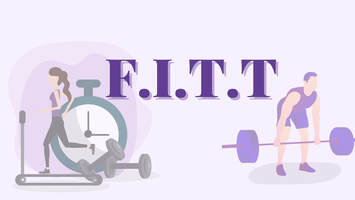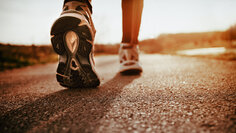Week 1: Ready, Set, WALK!
Welcome to week 1 of Walk with Ease in the Worksite! We encourage you to keep a daily or weekly walking log throughout the 6-week program to be able to reflect and improve your personal goals. You can log your minutes on the provided portal. We also encourage participants to use our other provided resources in order to get the most out of the Walk with Ease program.
Portal Platform Basics: |
Goals: |
|
Complete this process each week to track your progress
|
Goals for the week:
|
Incorporate stretching & strengthening into your walking
Not sure where to start?
This walking chart shows you where to start if you have never walked before, but also provides useful information about how to progress.
- Do you already walk more than 10 minutes? No problem enter the chart at your current level and progress accordingly.
- Remember this is a suggestion, you may not be able to walk this long right away or progress as quickly as outlined, you may even "top out" and not be able to add any more time and that is okay!
Week |
Duration |
Times per week |
1 |
10 minutes |
3-5 |
2 |
15 minutes |
3-5 |
3 |
20 minutes |
3-5 |
4 |
25 minutes |
3-5 |
5 |
30 minutes |
3-5 |
6 |
35 to 40 minutes |
3-5 |
Additional Helpful Resources:

- Starting Point-Self Test
- This test can be directed to those who may or may not deal with Arthritis, but the Starting Point-Self Test specifically talks about Arthritis in terms of pain and fatigue
- The test above will help you consider how some common problems associated with arthritis can affect you
- The scoring instructions can help guide you to where you stand currently
- You can use this test again after the 6 weeks to gauge improvements
- Walking Contract
- A walking contract can be a good way to hold yourself accountable during the 6-week program and beyond
- It can correlate to goal setting
- Within the contract, you can include what you would like to accomplish, when you would like to accomplish it, and what will possible motivate you in doing so
- Walking Plan
- People who make written plans often have greater success in meeting their goals
- There are 6 principles to consider when creating a walking plan:
- Create a contract with yourself about walking goals
- Keep records of your walking
- Use self-measurement tools to check progress
- Check your plan every week
- Decide how to reward yourself for sticking to the program/reaching your goals
- Continue being physically active creating new contracts
- Walking Diary
- A walking diary can be beneficial to maintain and make changes to your various levels of physical activity
- You can use calendars, planners, or other note taking tools to track your walking
Proper Walking:

Although walking can often be considered an easy task, there are elements to walking we don't consider. For a successful walking experience, it is important to consider Good Body Mechanics and Safe Walking Techniques.
Good Body Mechanics can be very helpful in the reduction/prevention of injury, fatigue, and can also be beneficial on the enhancement of athletic skill. Safe walking techniques are very important for both preventative, as well as resourceful exercise behaviors.
Good Body Mechanics can be very helpful in the reduction/prevention of injury, fatigue, and can also be beneficial on the enhancement of athletic skill. Safe walking techniques are very important for both preventative, as well as resourceful exercise behaviors.
FITT Principle:

An exercise prescription to help participants understand how hard and how long they should exercise.
F - Frequency (how often you exercise)
I - Intensity (how hard)
T - Time (how long/duration)
T - Type (what kind)
FITT Principle Specific to Walk with Ease:
F - Frequency (how often you exercise)
I - Intensity (how hard)
T - Time (how long/duration)
T - Type (what kind)
FITT Principle Specific to Walk with Ease:
- Frequency
- At least 30 minutes of walking on at least 5 days/week
- Try spacing sessions out if your body needs rest days
- Intensity
- How much you are exerting yourself
- low-to-moderate intensity (Working hard enough to feel some changes in your body, such as increased breathing, heart rate, or muscle use, but not so much that you become out of breath or feel it is hard to keep up)
- Time
- At least 30 minutes of walking on at least 5 days/week
- Goal of cardiovascular exercise is to gradually build your endurance and ability to go for a longer time
- Type
- Flexibility, stretching, strengthening, cardiovascular exercises
- Walk at a pace that is comfortable for you
- Build up slowly in each type of exercise you do
Clothes Checklist

Clothes: You should be able to walk all seasons of the year depending on appropriate clothing.
Socks: Socks can make a big difference in any issues you may have with your feet
Accessories: Watches, walking sticks, or sunglasses could be beneficial for your walking
- Clothing should be simple, comfortable, and efficient
- Always good to dress in layers especially during the colder months
- Choose clothes that allow free movement
- Select lightweight, absorbent material
- Wear the right undergarments
- Wear bright or reflective clothing if walking outside
Socks: Socks can make a big difference in any issues you may have with your feet
- Pick the right materials, many prefer padded socks made from a blend of acrylic fiber and cotton or wool. The acrylic wicks away perspiration from your skin, and the cotton or wool then absorbs it, so your feet stay drier and more comfortable.
- Wear two pairs of socks if you are prone to blisters to help reduce or eliminate rubbing
- Get the proper fit of sock, look for snug-fitting socks to avoid chafing.
- Watch for wear, if your socks wear through in the toes, your shoes may be too short or your foot is sliding forward with each step. Normal sock wear is in the heel or ball of your foot.
- Match sock fit with shoe fit. If you are buying new shoes take the socks you prefer to walk in with to get the best fit.
Accessories: Watches, walking sticks, or sunglasses could be beneficial for your walking
- Watches can help measure how many minutes of walking you have done
- Pedometers can measure how many steps you take
- One mile is approximately 2000 steps
- Walking sticks can help with balance and joint support
- Fanny packs can help carry keys or other miscellaneous items you may want
- Hats, visors, and sunglasses can help protect skin and eyes from the sun
Shoe Checklist

If you are starting to think about getting new shoes for walking here are some things to look for:
Insole: The insole should match the arch of your foot.
Sole: The sole should be made from a foam material for cushioning and it should bend at the forefoot rather than the midfoot.
Heel: The heel should be made from a foam material to provide shock absorption.
Heel Grip: The heel grip should hold the heel snugly in place. A padded cuff at the top opening may provide firmer grip and cause less friction on the skin.
Shoe Material: Breathable materials such as leather and cotton canvas are preferable to synthetics or plastic.
Toe Box: The toe box should provide plenty of wiggle room for the toes in both depth and width.
Proper fit: Always try on both shoes with the same type of socks you will be wearing when walking. If you use any orthotic supports, fit them in the shoes before deciding. Shoes should fit you comfortably, have a snug heel fit so your heel doesn't slip, and have a roomy toe box - enough room to allow your toes to spread out. There should be a thumb's width between the end of your longest toe and the end of the shoe. Shop for shoes at the end of the day, when your feet tend to be at their largest size.
Closures: Shoes with laces let you adjust as needed and give more support than slip-on shoes. If you have problems tying laces, consider Velcro closures or elastic shoelaces.
Insole: The insole should match the arch of your foot.
Sole: The sole should be made from a foam material for cushioning and it should bend at the forefoot rather than the midfoot.
Heel: The heel should be made from a foam material to provide shock absorption.
Heel Grip: The heel grip should hold the heel snugly in place. A padded cuff at the top opening may provide firmer grip and cause less friction on the skin.
Shoe Material: Breathable materials such as leather and cotton canvas are preferable to synthetics or plastic.
Toe Box: The toe box should provide plenty of wiggle room for the toes in both depth and width.
Proper fit: Always try on both shoes with the same type of socks you will be wearing when walking. If you use any orthotic supports, fit them in the shoes before deciding. Shoes should fit you comfortably, have a snug heel fit so your heel doesn't slip, and have a roomy toe box - enough room to allow your toes to spread out. There should be a thumb's width between the end of your longest toe and the end of the shoe. Shop for shoes at the end of the day, when your feet tend to be at their largest size.
Closures: Shoes with laces let you adjust as needed and give more support than slip-on shoes. If you have problems tying laces, consider Velcro closures or elastic shoelaces.
Follow us on social media for more health and wellness tips!

